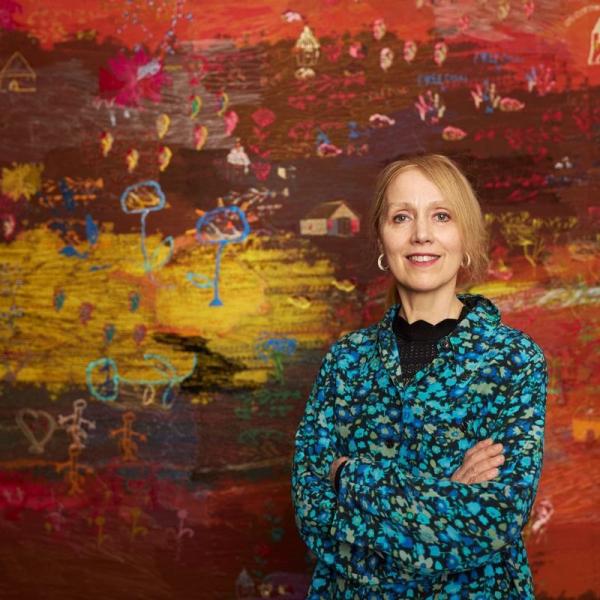Kettle described her work at a sewing machine – ‘which is my trade tool’ – as ‘story-telling informed by the process of making.’ The works evolve and develop in an unpredictable way and tend to be very large in scale.
One such work is four-metre-wide The Odyssey, one of a trio of works inspired by Greece (where she lived for a time) which interweave personal stories, mythology, and contemporary narrative. Thread forms a central motif. Odysseus’s faithful wife Penelope uses the act of weaving and secretly unweaving a shroud for her missing husband as a way to ‘capture time’ and delay calls for her to marry again.
Kettle explained that she saw the story as about ‘an act of faith’ – Penelope is not only faithful, but she has faith that Odysseus will return – and that the process of making the work mirrored this. Because it is so large, and because the machine stitching meant that she worked on it from the back, and at times upside down, she could see very little of it and could only have faith that it would be successful: ‘It’s not like a painting. You can’t see what you’re doing and can’t stand back and look at it, unless you take it out of the machine,’ she said.
In another work, telling the political story of the rise of the Golden Dawn party in Greece, she draws on the myth of Theseus. In Crete, Ariadne gives Theseus a thread to help guide him out of the labyrinth after he has killed the Minotaur. ‘The thread has agency,’ said Kettle, and it also represents the way in which she feels her own life has been empowered through stitching.
Thread reappears again in The Dog Loukanikos and the Cat’s Cradle, where police who attempted to restrain Golden Dawn protestors are themselves tied up with golden thread, while on the left of the work three girls, a homage to Kettle’s own daughters and two sisters, play cat’s cradle, in which thread is animated into a range of figures. ‘Thread can restrain but it can also empower,’ she said.





